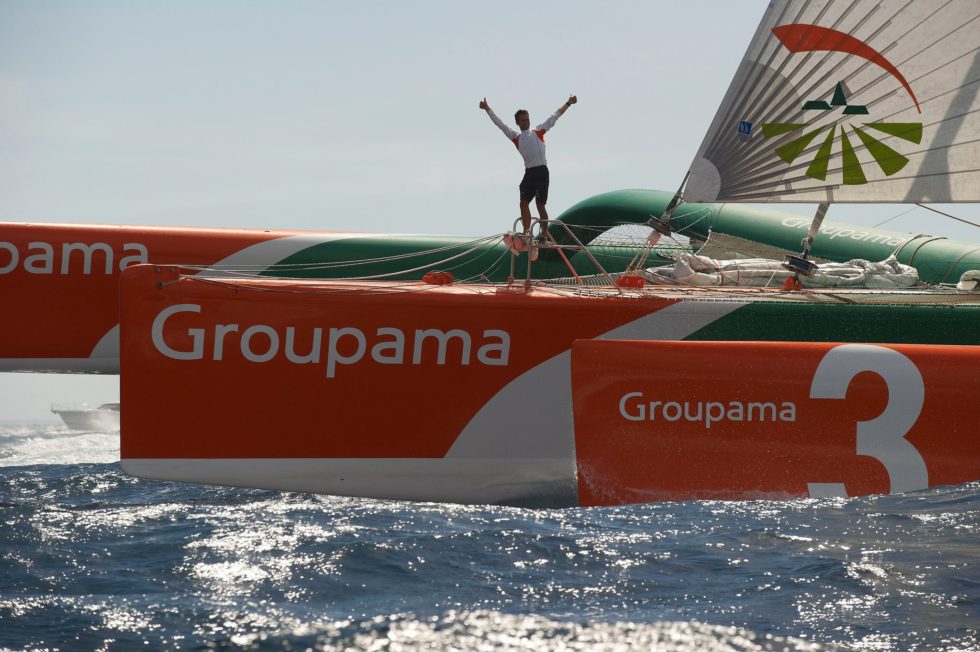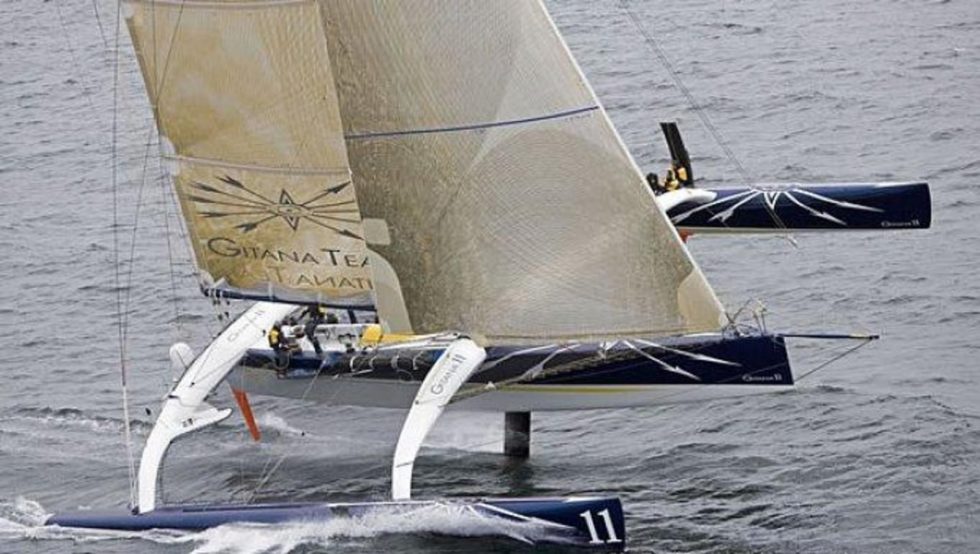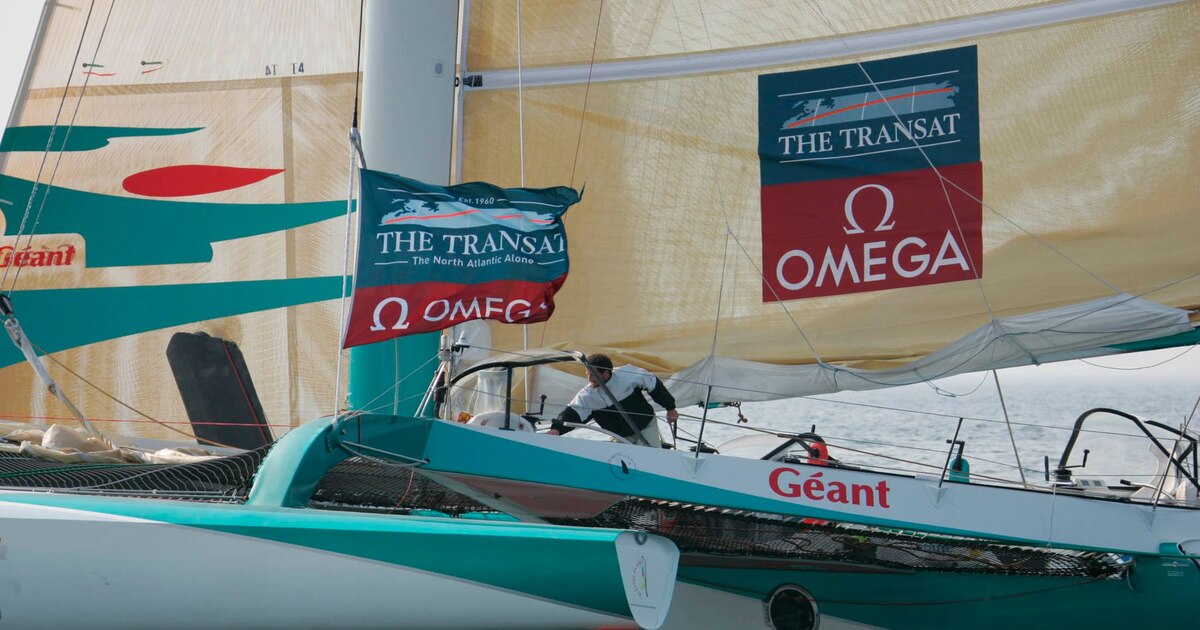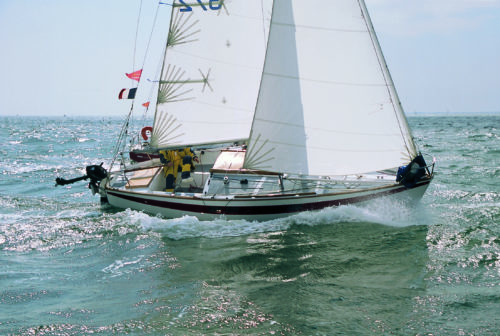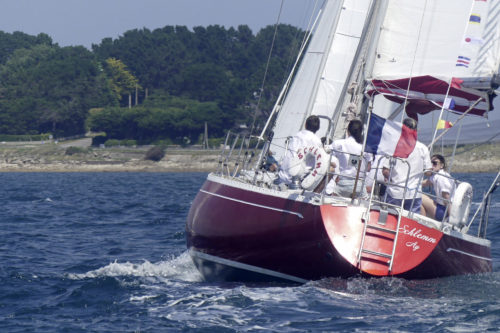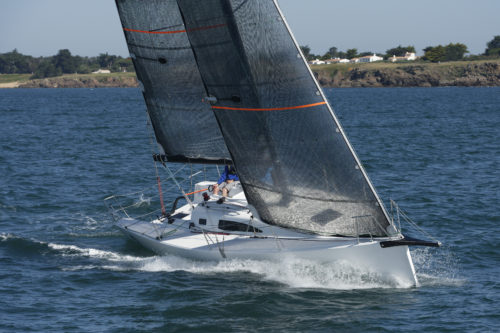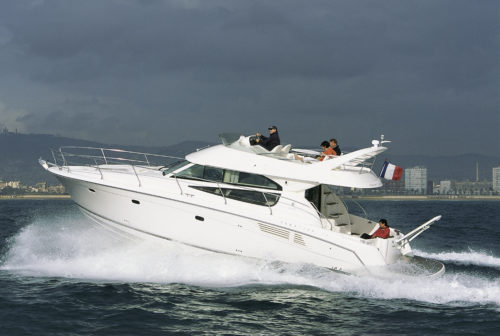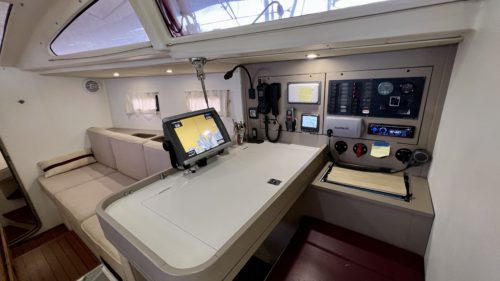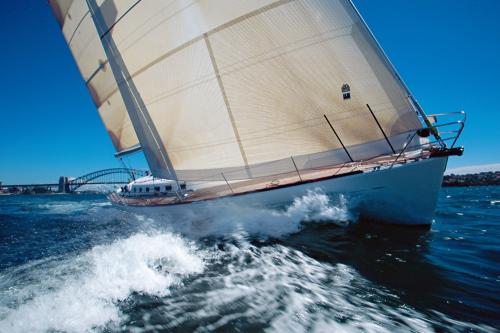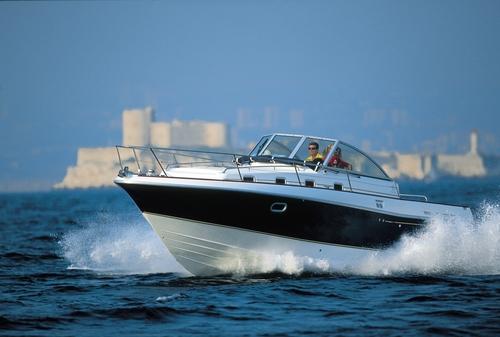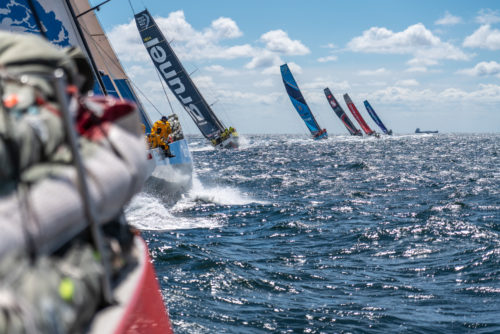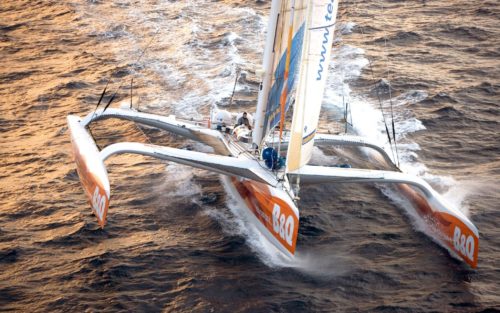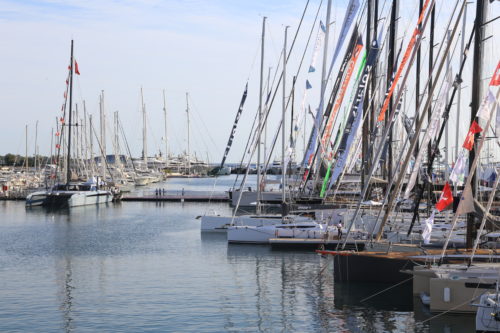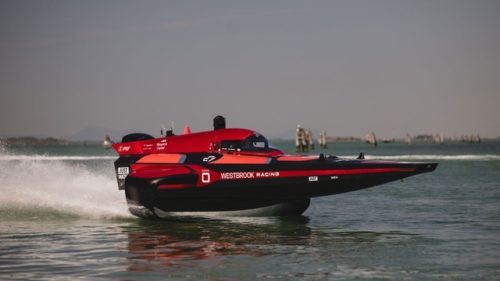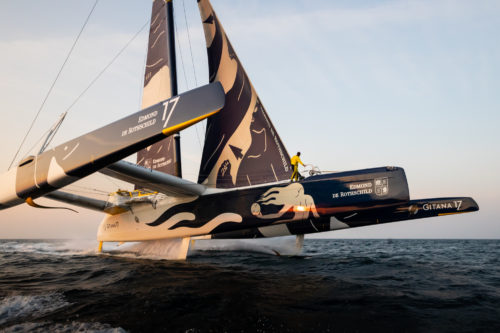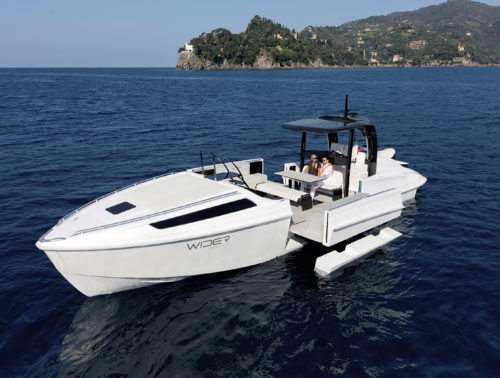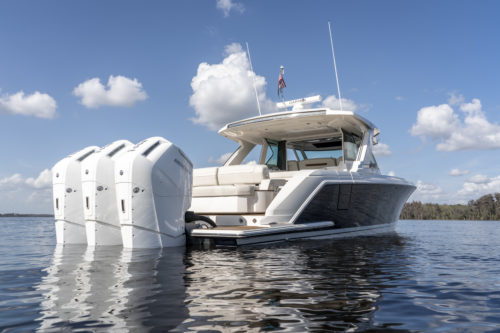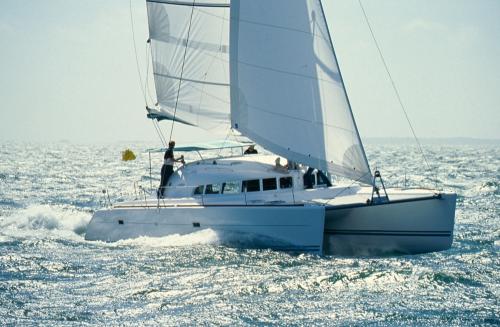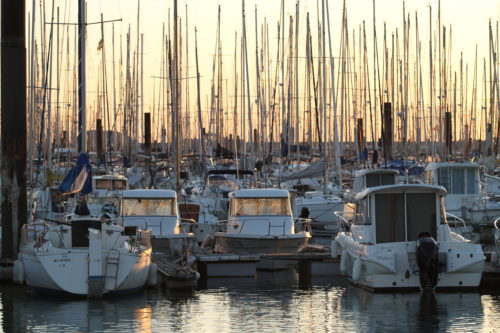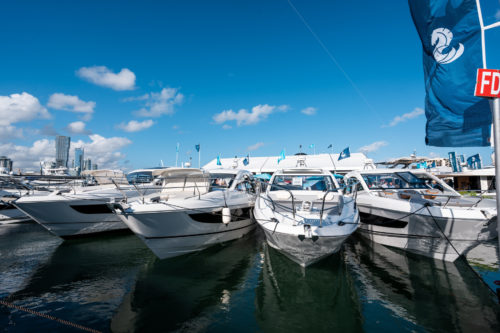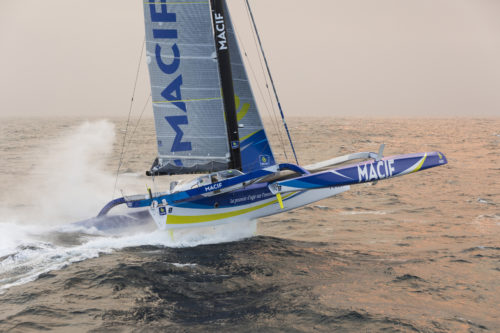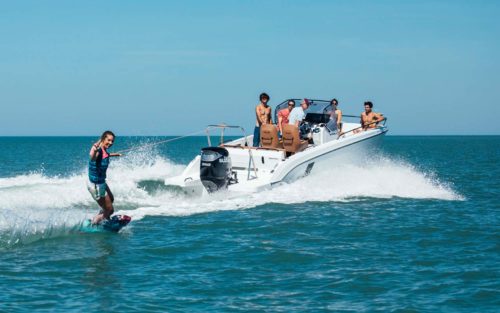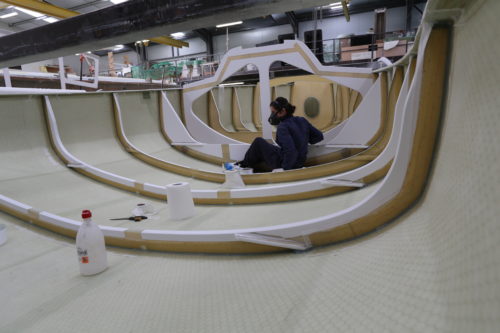Transoceanic racing: between two worlds
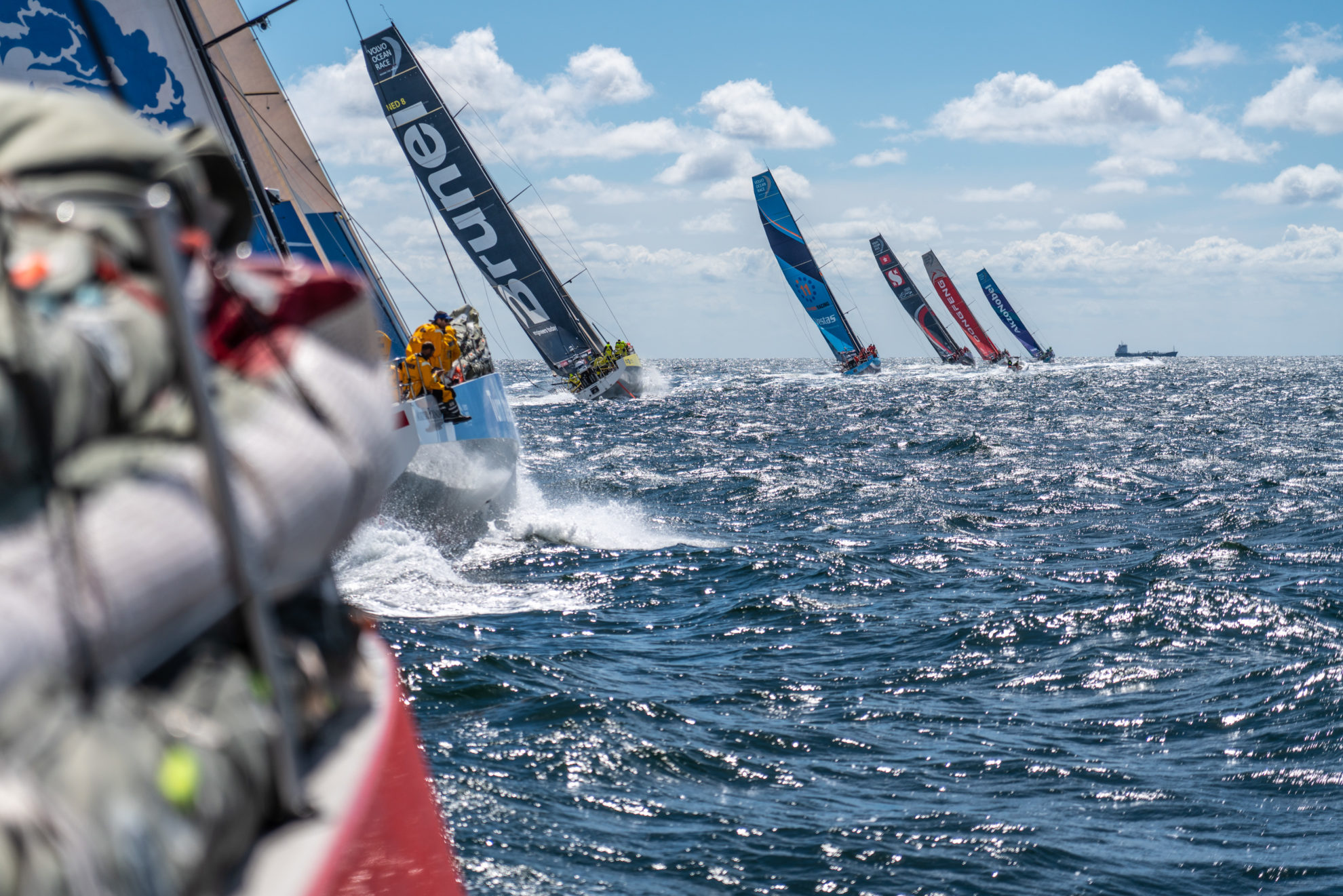
At the dawn of the 21st century, a glance at the entry lists for the Volvo Ocean Race and the Route du Rhum clearly illustrates their different practices and cultures. The first is a fully crewed, round-the-world race contested over nine legs (it featured only four when it began in 1973 as the Whitbread Round the World Race). The 2001–2002 event features crews from Germany, Australia, the United States, Bermuda, Norway and Sweden, but not a single boat from France. On the other hand, foreign competitors are the exception among the 58 solo sailors on the starting line of the 2002 Route du Rhum. That will not prevent two of them – the UK’s Ellen MacArthur and Mike Golding – from claiming the top two spots in the IMOCA monohull category. However, impactful as these foreign appearances may be, they remain marginal and do not reflect any real widespread enthusiasm for these races outside of France.
The rift between the two worlds of offshore racing – the Anglo-Saxon and the French – goes back a long way. It can be traced back to the late 1970s, when the British organizers of the OSTAR, alarmed by the scale of some projects – particularly Alain Colas’ giant 72m monohull Club Méditerranée – decided to impose size limits on the boats that could take part. The Route du Rhum is created in part as a response to this shift, and its popular success will prove pivotal over time: sponsors flock to it, and a whole ecosystem develops around the world of solo ocean racing “à la française”, supporting a growing number of people over the years – racers, shore teams, designers and specialist yards – attracting the finest talents from across France… who, logically, turn away from international crewed events. From the late 1980s to the end of the 2000s, the Whitbread (renamed the Volvo Ocean Race in 2001) continues to bring together every four years the global elite of offshore racing… with virtually zero French boats.
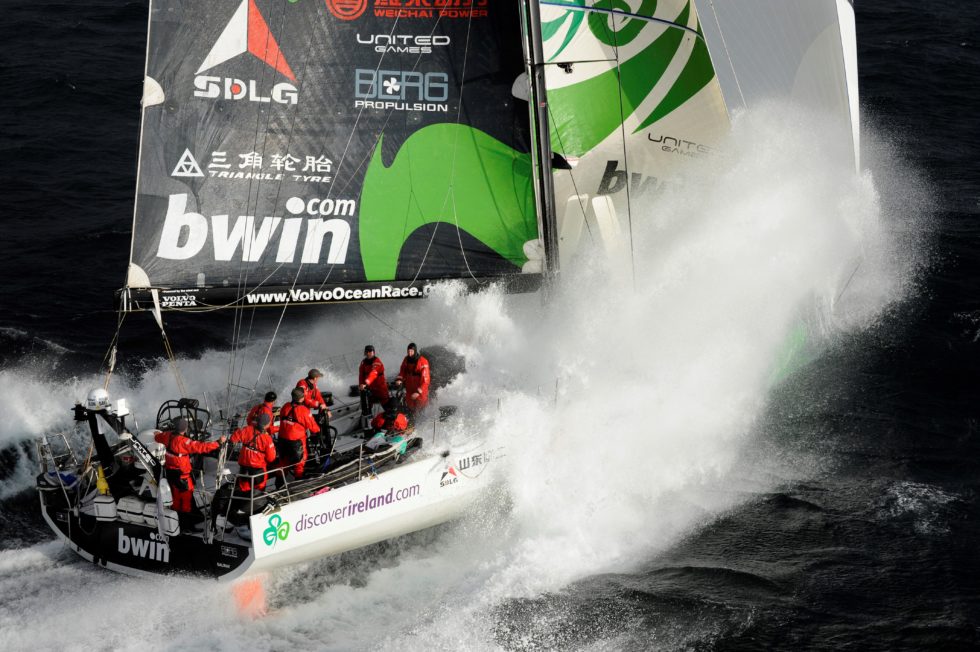
Growing media spotlight on events
This French specialization in offshore racing can be partly explained by the strong media coverage of the solo events. Olympic sailing and traditional “classic” races, closely followed by the press and television in Anglo-Saxon countries and Northern Europe, are seen in France as too complicated to capture public interest, and are therefore barely covered. Which accounts for this strange paradox: a French Olympic sailing champion is far likely to be less well known than a poorly ranked participant in a solo transoceanic race…
Transoceanic racing in France is largely focused around two key events: the Route du Rhum, from Saint-Malo to Pointe-à-Pitre, and the Vendée Globe, a non-stop round-the-world race passing through the three capes. The start of each race alternates every four years, with both events held in even-numbered years. In addition to these flagship events that command much of the spotlight, the Transat Jacques Vabre (formerly the Route du Café), sailed double-handed from Le Havre every two years in odd-numbered years, and a handful of other races with more unpredictable lifespans, add to the offshore racing calendar. The English Transat (OSTAR), a pioneering race since 1960, has lost much of its prestige since the 1990s, largely due to competition from French events.
Alongside these major events, two additional races have become increasingly popular over the decades: the Mini Transat (or Transat 6.50) and the Transat AG2R (later renamed the Transat Paprec). The first event, originally a British creation in 1977, proved so popular on the French side of the Channel that its organization passed into French hands from 1985. Reserved, as its name suggests, for boats no longer than 6.50m, the Mini receives little attention from the mainstream press, but has a huge impact within the sailing community: many of France’s top offshore sailors got their start there. Held every two years, it typically attracts more than 80 competitors.
Launched in 1992, the Transat AG2R, a double-handed race held every two years between a port in Brittany and the West Indies, is one of the few ocean races sailed with a strict one-design format. In this case, the Figaro Bénéteau, which was replaced in 2003 by the Figaro Bénéteau 2.
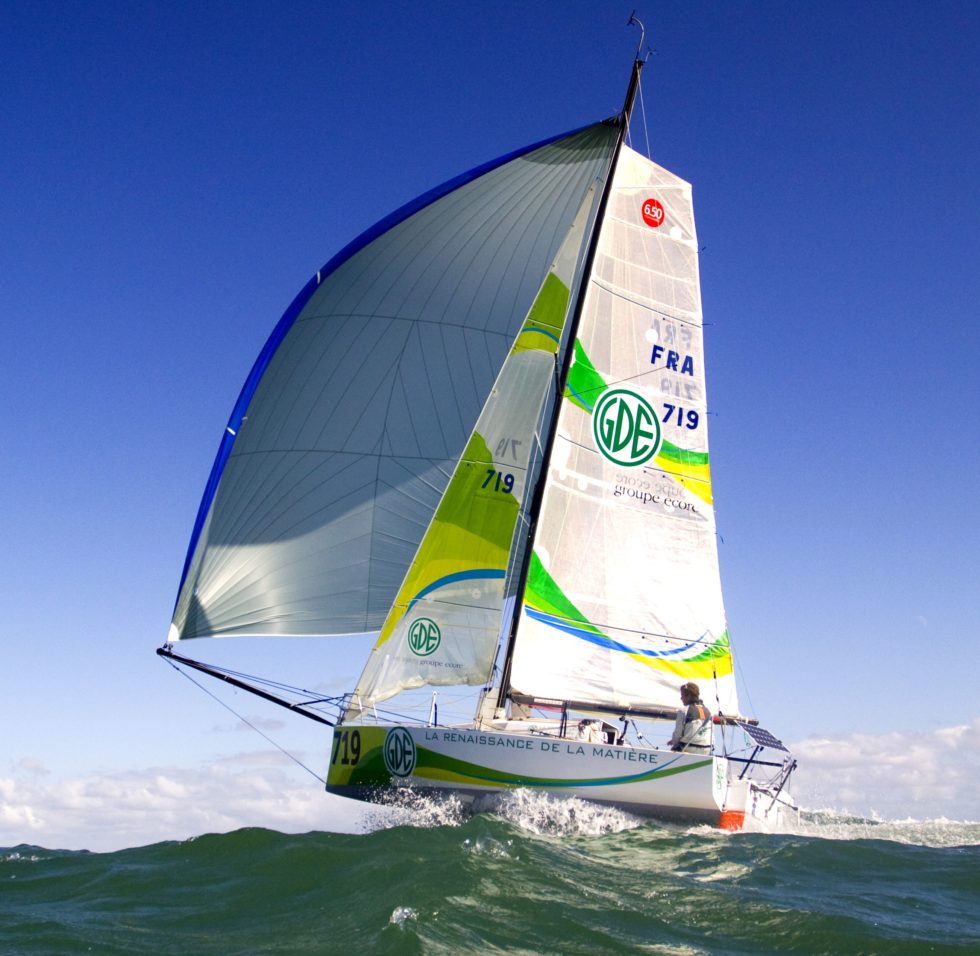
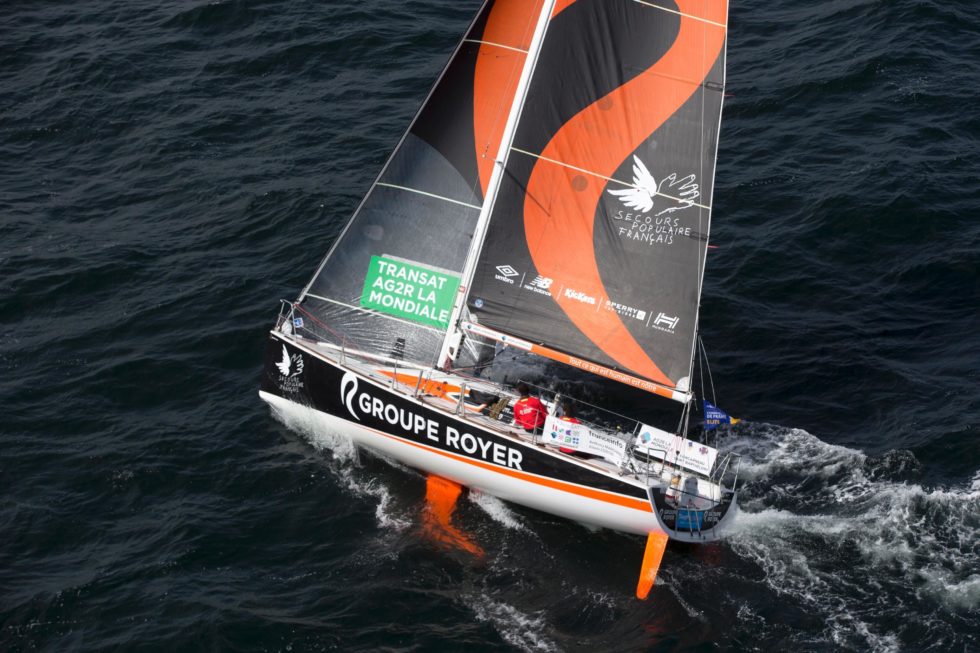
Development of a french offshore racing ecosystem
f it has done little to foster international rivalry, the strong focus on “made in France” events, preferably single-handed, has at least allowed French professionals to develop genuine expertise in the relevant fields. Whereas 20 years earlier, the best-performing multihulls were designed by American or British architects, including Dick Newick and Nigel Irens, by the 2000s, the leading trimarans and catamarans are being created almost entirely in France, by VPLP Design in particular (founded in 1983 by Marc Van Peteghem and Vincent Lauriot-Prévost), which racked up an impressive number of victories between the 1990s and 2010, as well as Gilles Ollier, Marc Lombard and Guillaume Verdier.
Among the sailors, the undisputed star of the transoceanic racing scene in the 2000s is Michel Desjoyeaux, who finished first in the Route du Rhum in 2002 and the OSTAR in 2004, and was a two-time winner of the Vendée Globe (2000-2001 and 2008-2009). Also featuring on the roll of honor are Francis Joyon, winner of the OSTAR in 2000, as well as Lionel Lemonchois and Franck Cammas, who took victory in the Route du Rhum in 2006 and 2010 respectively. And a special mention must go to the ever-unpredictable British challenger: not content with winning the monohull division of the 2002 Rhum, Ellen MacArthur pulls off the extraordinary feat of completing her crossing in almost the same time as the leading trimaran, an apparent defiance of all conventional wisdom… While this achievement owes much to a series of circumstances (numerous breakdowns and retirements among the multihulls), it nevertheless foreshadows a key shift in the 2000s: the gradual decline of the 60-foot ORMA trimarans (Ocean Racing Multihull Association), which had dominated since the 1990s, and the rise of the IMOCA 60 foot monohulls. This latter category, more dynamic and popular than ever thanks to the Vendée Globe, now plays its own distinct role in classic transoceanic races, with a separate ranking that is just as prestigious as that of the multihulls.
